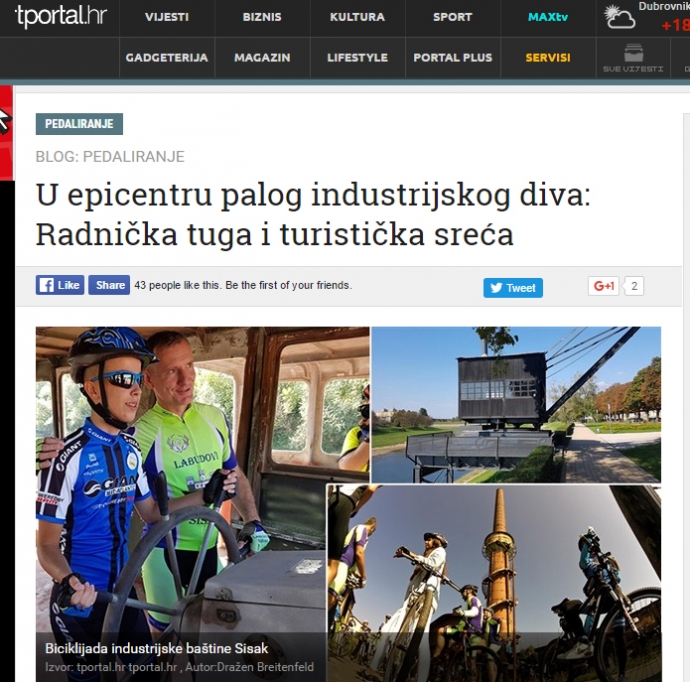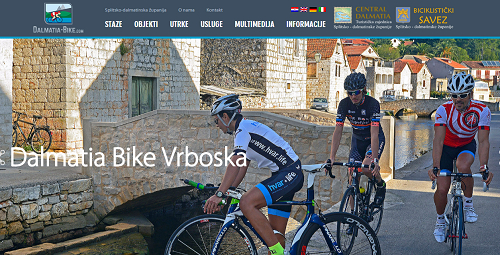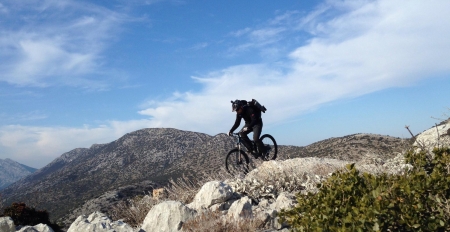A cycling event named “Industrial Heritage of Sisak” was in many ways unique and special. After meeting outside the Sisak Tourist Board on the Kupa river bank, we headed out on a route that gives food for thought as we tour factories which are no longer needed. But is it really so? The old bridge belongs to grand construction buildings from 1934 and is still in use, is the trademark of Sisak and one of our most beautiful bridges. Before we crossed it, we stopped at the rundown electric plant which provided power to Sisak over a hundred years ago. The state of the former wheat magazine on the other side of the Kupa is no better. Along the way we are told Sisak used to have two breweries, Dražen Breitenfeld wrote on tportal.hr on November 5, 2016.
But the real industrial bike tour is yet to come. We ride along the right bank of the Kupa towards Caprag and the great industrial giant - ironworks. We pass through the workers’ settlement which was built for ten thousand local workers and their families. We are presented with the engineers’ street where managers, administrators and engineers lived. Demonstrating how modern and urban the settlement was are the facts they had gas heating, many recreational and relaxation options, even an Olympic swimming pool. Lots of green spaces, parks and lakes prepared so workers and their families would have a quality life. Even many sculptures of which some hold artistic value today.
We were guided to the heart of the ironworks by the director of Sisak Museum Vlatko Čakširan and director of the tourist board Milijana Borojević, with many cyclists from BK Roda and Labud who also supported this manifestation. While we all gaze at the skies and observe tall furnaces, chimneys and grand buildings, every now and then a guard comes by asking what are intentions are. Although announced, we could not enter all spaces, especially not the refinery.
Although we toured only a part of the industrial heritage, we spent over three hours on bikes and travelled some thirty kilometres. The next object on the route is the Crnac river harbour where oil tankers dock. We had the opportunity to see and visit the oil terminal on Sava river and learn Sisak had the first refinery back in 1907, built by Shell. The oil came via Danube and Sava to Sisak. This town was known by the chemical industry Radonja whose plants we just passed through, as well as those of Segestica and Siscia, which are partially still in function.
Still, the nicest was the visit to a very active and only Croatian river shipyard. Visiting ships being built or renovated in dry dock was a true attraction. we had the opportunity to tour a ship under reconstruction for tourism, to be part of the Sisak cultural offer. Bike helmets took over the deck and steering wheel, becoming the first promoters of industrial heritage, once the pride and success of the town. This time we toured the north and south industrial zones, finishing the tour at the brick lake, once used to extract clay for bricks. The entire area is being revitalized and prepared as a recreation zone, modelled upon Bundek lake in Zagreb.
Nice weather and good cycling, always a good recipe for good mood. But still, during cycling there was a discrete discomfort. Not so long ago there were tens of thousands of people here, the life of Sisak. The wounds are certainly still fresh, but the fact remains the world doesn’t need such grand plants and factories anymore, at least not in this volume. So it is better to convert them into any other socially responsible purpose. In some areas of the industrial zone smaller plants have sprung up. Obviously the revitalization, to offer any results, will demand a lot of effort, ideas and innovation, to give this former giant a new future.
A step has already been made in this sense. A Sisak town project titled “Info Centre of Industrial Heritage - Holland House” with a total value of 95 million Kuna has been accepted by the Ministry of Regional Development and EU Funds. Financing has been approved, with a deadline of two years for completion. As of now it is a unique project of its kind in Croatia, designed to present industrial heritage as a touristic potential. The project idea was given by the director of the City Museum Vlatko Čakiršan based on long term research of industrial heritage.
Also, a lecture was held in Sisak on “European Perspectives in Protecting Industrial Heritage and Slovenian Experience.” It was a part of the “Days of Sisak Industrial Heritage.” The main subject were European experiences in protecting and presenting industrial heritage as a basic value intertwined into the history of this part of the world. Experts, together with the local community and interested individuals, find solutions to protect industrial heritage as an important part of common identity and new spaces for economic prosperity and future development of locations. Experiences of certain European countries can help our nation on the road to quality valorisation and presentation of this type of heritage.









